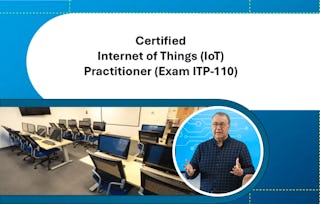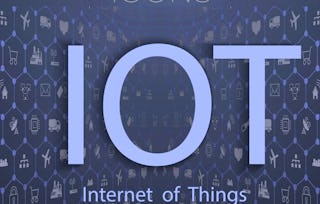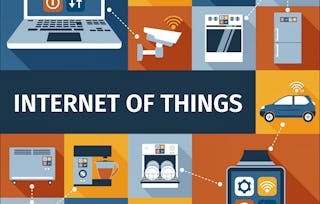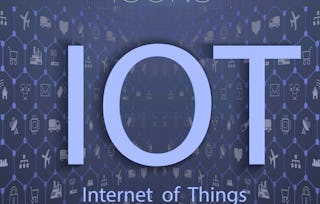The Internet of Things (IoT) stands to be the next revolution in computing. Billions of data-spouting devices connected to the Internet are already fundamentally changing the way we live and work. This course teaches a deep understanding of IoT technologies from the ground up. Students will learn IoT device programming (Arduino and Raspberry Pi), sensing and actuating technologies, IoT protocol stacks (Zigbee, 5G, NFC, MQTT, etc), networking backhaul design and security enforcement, data science for IoT, and cloud-based IoT platforms such as AWS IoT. As an optional honors avtivity, students will be guided through laboratory assignments designed to give them practical real-world experience, where they will deploy a distributed wifi monitoring service, a cloud-based IoT service platform serving tens of thousands of heartbeat sensors, and more. Students will emerge from the class with a cutting-edge education on this rapidly emerging technology segment, and with the confidence to carry out tasks they will commonly encounter in industrial settings. Important: To complete the practical part of the whole series (honors) there will be practical experimentation using actual hardware, which you will need to acquire. (Cost may vary between 100 and 200 USD depending on your location). Most parts that are needed for the first course, will be re-used in the following courses.
Gain next-level skills with Coursera Plus for $199 (regularly $399). Save now.

IoT Devices
This course is part of Hands-on Internet of Things Specialization

Instructor: Matthew Caesar
26,923 already enrolled
Included with
(528 reviews)
Recommended experience
What you'll learn
Assembly of networked devices, programming of networked devices
Skills you'll gain
Details to know

Add to your LinkedIn profile
10 assignments
See how employees at top companies are mastering in-demand skills

Build your subject-matter expertise
- Learn new concepts from industry experts
- Gain a foundational understanding of a subject or tool
- Develop job-relevant skills with hands-on projects
- Earn a shareable career certificate

There are 4 modules in this course
Welcome to our first course on Internet of Things! You will become familiar with the course and our learning environment. The orientation will also help you obtain the technical skills required to navigate the course. In this week you'll see that The Internet of Things is amazing, but it's not like it's some completely new thing. The amazing devices and technologies being are made up of systems, protocols, and architectures that have been around for decades. So in order to understand IoT, it's important to understand some key pieces of the Internet. As an optional "honors" activity (which we strongly recommend doing) we'll also get you started on the lab project - the best way to get your hands on things. In this practical lab we will guide you to gain experience with Internet of Things devices. You will do this by implementing a 2019 Honda Civic. In particular, you will be implementing a vehicular network and computation infrastructure comparable to that in the 2019 Honda Civic. Your infrastructure will perform real-time communications within the automobile to perform life-saving features such as obstacle avoidance and lane departure mitigation. Doing this will give you strong experience in programming IoT components, as well as teach you about vehicular networks, an emerging powerful use case for IoT.
What's included
14 videos8 readings3 assignments1 discussion prompt
In this week we will describe the foundational notions of electricity and IoT circuits you will need to build real IoT devices. We will start off by describing what electricity is and how it flows through electronics. We will present what electronic components are out there, how to choose the set you need for your target system, and how to construct the circuitry between them to build the logic underlying your device.
What's included
7 videos2 readings2 assignments1 discussion prompt
In computing, we have the concept of architecture as well. You don't just design computing systems. In this module, you will learn about how IoT systems are architected. We will start off by describing the higher-level components used to build IoT systems such as ICs and breakout modules. We will present computational platforms used in constructing real IoT devices, typical components used therein, and alternative designs used to connect them together.
What's included
5 videos3 readings3 assignments1 discussion prompt
In this week, we will study the design of IoT platforms - how their components are assembled together, and how software running on top orchestrates their actions to perform their intended purpose. We'll also collect your submission of the lab project you started in week 1.
What's included
2 videos3 readings2 assignments1 discussion prompt
Earn a career certificate
Add this credential to your LinkedIn profile, resume, or CV. Share it on social media and in your performance review.
Prepare for a degree
Taking this course by University of Illinois Urbana-Champaign may provide you with a preview of the topics, materials and instructors in a related degree program which can help you decide if the topic or university is right for you.
Instructor

Offered by
Explore more from Mobile and Web Development
 Status: Free Trial
Status: Free Trial Status: Preview
Status: PreviewPohang University of Science and Technology(POSTECH)
 Status: Free Trial
Status: Free TrialUniversity of California, Irvine
 Status: Preview
Status: PreviewPohang University of Science and Technology(POSTECH)
Why people choose Coursera for their career




Learner reviews
528 reviews
- 5 stars
75.75%
- 4 stars
20.26%
- 3 stars
2.84%
- 2 stars
0.37%
- 1 star
0.75%
Showing 3 of 528
Reviewed on May 12, 2022
there should some changes needed beacause of new skills
Reviewed on Sep 14, 2024
Learnt many things about IoT devices never read before.
Reviewed on Oct 1, 2024
Very informative and I m able to learn new things!
Frequently asked questions
To access the course materials, assignments and to earn a Certificate, you will need to purchase the Certificate experience when you enroll in a course. You can try a Free Trial instead, or apply for Financial Aid. The course may offer 'Full Course, No Certificate' instead. This option lets you see all course materials, submit required assessments, and get a final grade. This also means that you will not be able to purchase a Certificate experience.
When you enroll in the course, you get access to all of the courses in the Specialization, and you earn a certificate when you complete the work. Your electronic Certificate will be added to your Accomplishments page - from there, you can print your Certificate or add it to your LinkedIn profile.
Yes. In select learning programs, you can apply for financial aid or a scholarship if you can’t afford the enrollment fee. If fin aid or scholarship is available for your learning program selection, you’ll find a link to apply on the description page.
More questions
Financial aid available,






